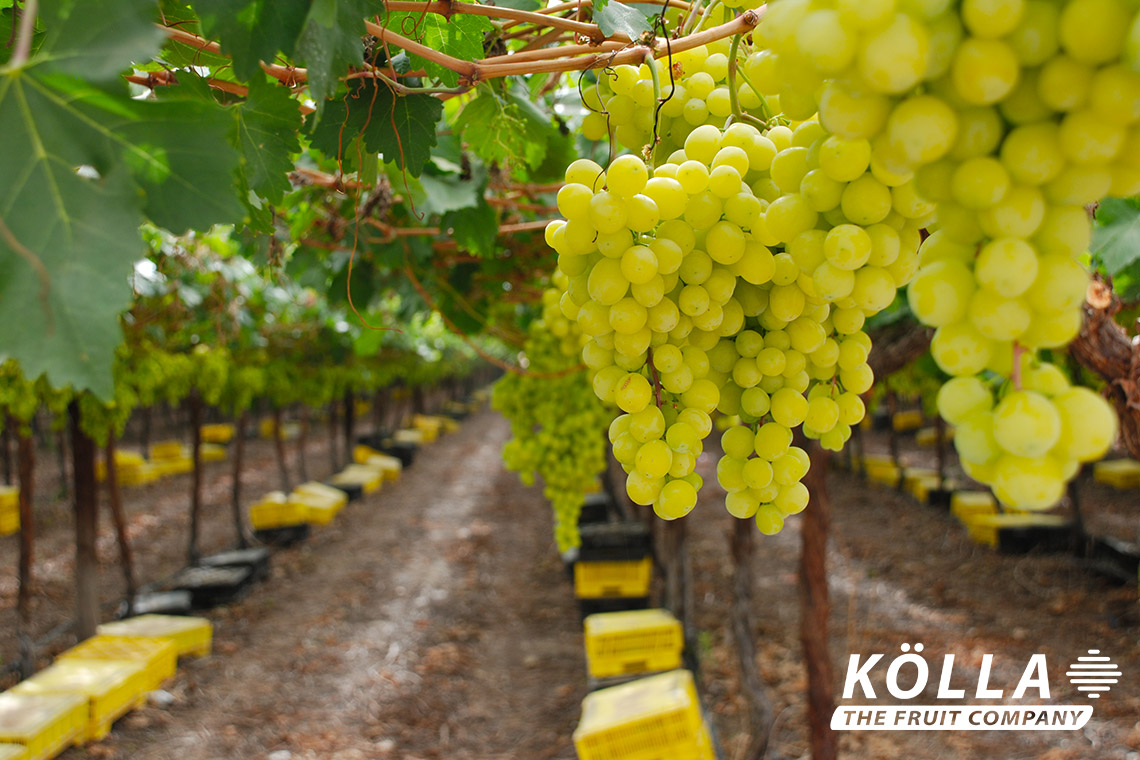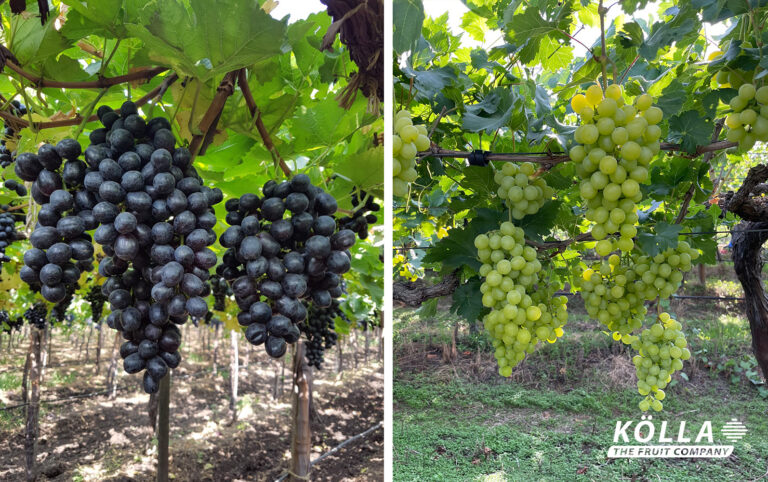This year’s European grape season was characterized by challenging conditions, particularly due to the remarkably high prices that had to be paid right in the fields. The overall yields in this season were significantly lower, especially for seeded grapes and the light, seedless varieties. This forced a transition from Europe to overseas as early as the end of October. Programs for seeded grapes were also concluded about two weeks earlier. In contrast, red seedless varieties were available in good quantities throughout November, leading to a dual-track strategy for many retailers.
While, in principle, the high prices could be realized, demand remained strong. However, due to the persistent shortage of grapes this year, only a few promotions were carried out by retailers. Although supply was available at all times and extended until the end of October, sales were considerably lower this year compared to previous years.
The gradual and calculated shift to light-seeded grapes began in week 45 and continued until week 48. The majority of this category was supplied by our vendors from Brazil and Peru. Despite the challenges of the summer, we were able to reach the level of weeks 44-45 with high-quality Italian white grapes.
The situation with red and blue seedless varieties is somewhat different. It appears that 2023 could be the year when European fruit is delivered well into December. Like the light-seeded varieties, the dark-seeded varieties suffered in the summer, but a significantly more favorable autumn allowed for an expansion of programs. Thus, we were able to support our customers with high-quality products at extremely competitive prices. We hope to fully transition to Brazilian fruits in the coming weeks, especially due to the production decline in Peru.
From overseas, the northern part of Peru has practically completed its European campaign, while Brazil, after the rains in week 45, decided to focus on its domestic market. Namibia experienced an earlier season than in previous years. However, it is already clear that while the initial quantities came early, the rest of the season seems to be complicated, as fertility problems are also emerging in other regions. South Africa shows similar signs, but our observations suggest that the decline will occur only in the early varieties.
Although we expect an increase in quantities compared to last year, we believe this will still be within the average of recent years, mainly due to the expected decline in productivity as the harvest progresses, especially for the light-seeded varieties.
December 2023


